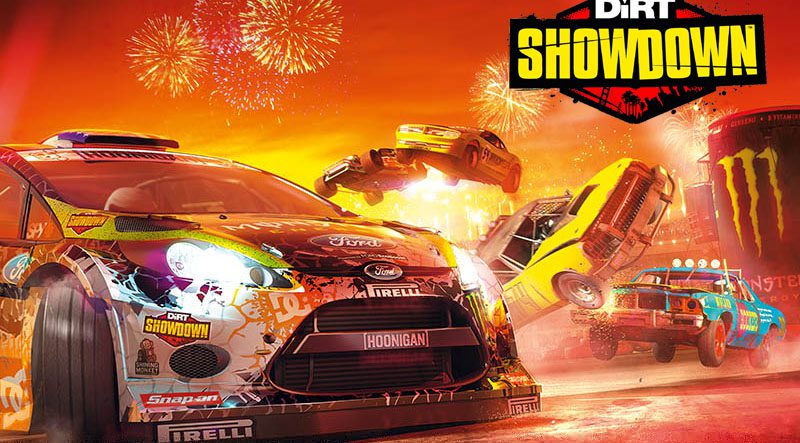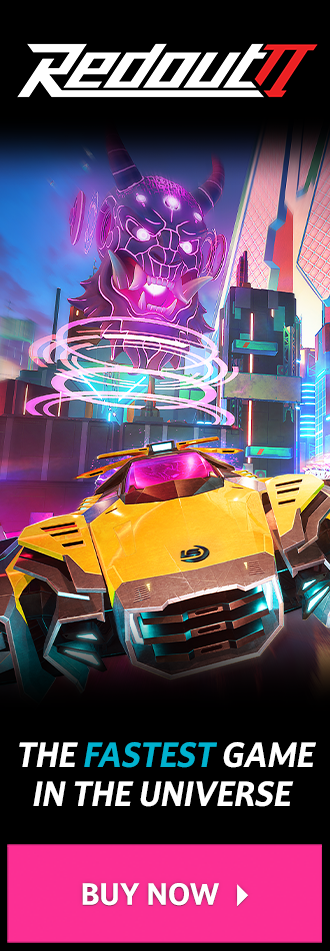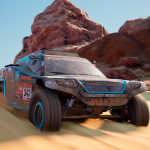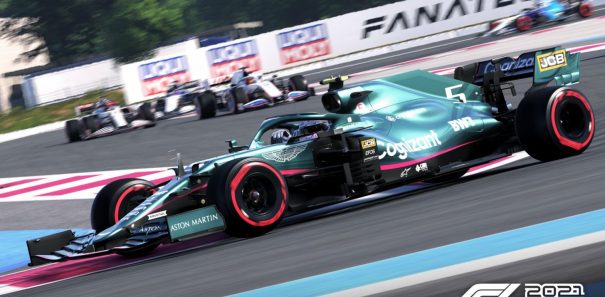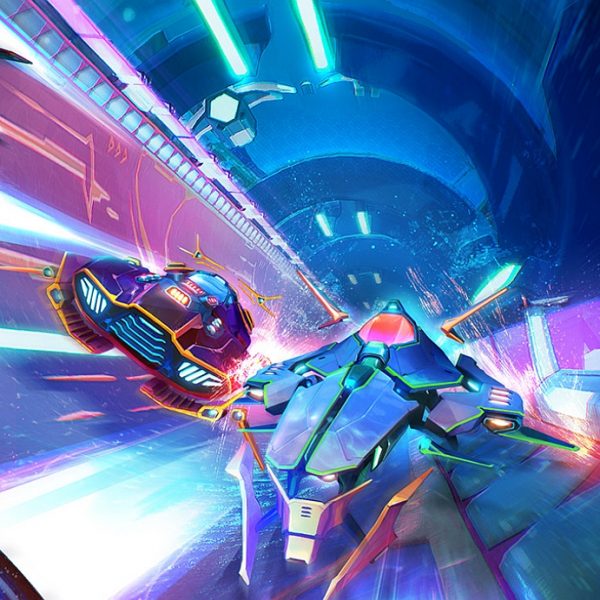There’s been a fast-growing trend in racing games this year: the spin-off. Ridge Racer shocked us all when it was seemingly awarded an ASBO in BugBear’s building-breaking spin-off RR Unbounded, whereas Forza Motorsport will be potentially revolutionising the open world racing genre when Forza Horizon swaps conventional race tracks for sunny Colorado’s open canyon roads later this year.
The same could be said for Need for Speed, a series which tries, but so often fails, to reinvent itself year after year. These spin-offs were all made by different developers who are unaffiliated with the original games however, which brings us to DiRT Showdown. Here we have a spin-off to DiRT that ditches rallying altogether with an emphasis on destruction and showmanship, yet still developed by the newly renamed Codemasters Racing. So what’s its excuse?
If DIRT 3 was the bedroom-bound, sophisticated sibling rife with challenge and poise, DiRT Showdown is the rowdy illegitimate offspring that’s hell-bent on having a good time. What we have here is a full embracement of the Americanisation that has steadily shrouded the DiRT series with each passing iteration.
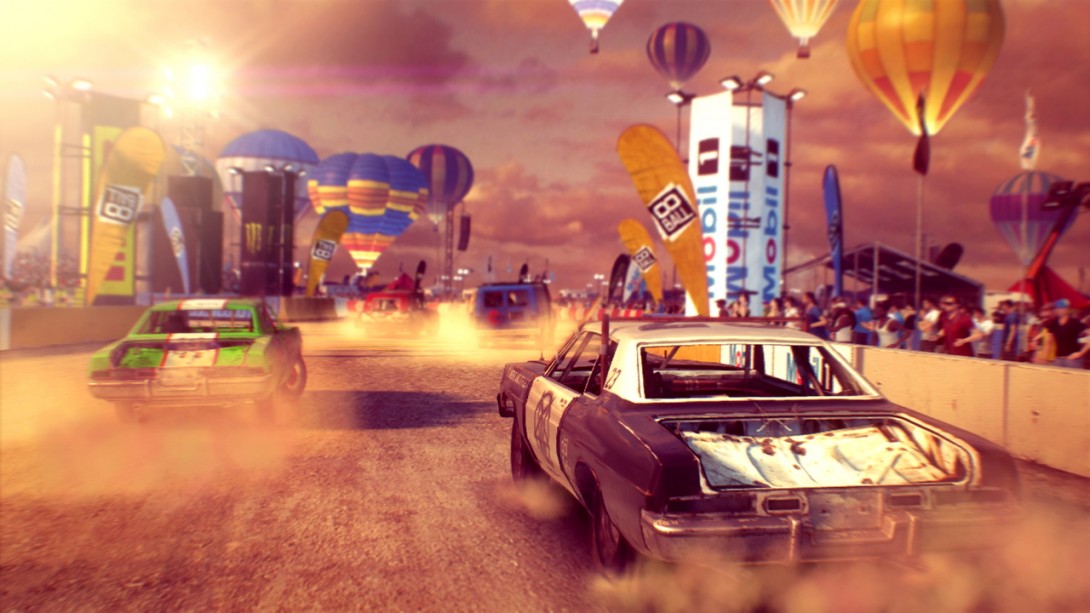
Consequently, the festival party atmosphere last seen in DiRT 2 has been turned up to 11 – tracks are now peppered with high-octane jumps amid a flurry of fireworks and pyrotechnics, the music is dominated by dubstep dross and the inane commentary from returning DJ Christian Stevenson is more OTT than ever. Hearing the word “awesome” exclaimed during every race soon becomes grating, and his butchering of the Queen’s English often has to be heard to be believed – “perpendicular awesomeness?” Really?
It certainly won’t be to everyone’s taste, then, but it was an inevitable, and arguably necessary, design decision on Codemaster’s part. DiRT has seen a noticeable divide in audiences, with those who crave a full-on rally experience akin to the early Colin McRae days and those who relish looking ‘gnarly’ in Gymkhana and crashing cars into each other. DiRT Showdown therefore caters explicitly for the latter, but DiRT 4 has already been confirmed to be in development with hints of a back to the roots-esque experience.
Dumbing it down
As a result, DiRT Showdown has undergone some significant modifications under the bonnet to make it more accessible, and the result is a handling model that veers firmly into the arcade school of driving. Car handling feels comparatively loose to DiRT 3’s superbly balanced model, and therefore isn’t designed with a racing wheel in mind, and there’s a noticeable absence of a cockpit camera, manual transmission or even a speedometer just to reinforce its arcade credentials. And that’s without mentioning the fact there’s now a rechargeable boost bar in a DiRT game.
The simplified handling works well in Race Off, DiRT Showdown’s take on competitive racing where full contact is actively encouraged, allowing you to tear round corners at breakneck speed and slam into opponents with pinpoint precision. It’s here that Showdown plays to its strengths, delivering fun and accessible arcade racing with Codemasters’ trademark sense of style and polish.
Hoonigan events fare less well, however. In what can only be described as Gymkhana-lite, you are once again tasked with hurtling around enclosed automotive playgrounds performing all manner of tricks and stunts, such as handbrake turns and dizzying doughnuts, but the more forgiving handling makes the experience considerably less challenging and therefore less rewarding. Mastering Gymkhana in DiRT 3 required skill, precision and practice; whereas Showdown lets you do doughnuts by simply dabbing the throttle without the need to even steer.
DiRT 3 veterans will feel most at home in Joyride, which lets you loose in either the same Battersea Compound found in DiRT 3 or the night time, and frankly far less interesting, Yokohama Docks area to practice tricks and collect packages at your leisure. It’s a fun distraction from the main career that’s initially fun to mess around in, but again the shallow driving physics deter you from coming back for more.
Hoonigan career events are divided into Head 2 Head, Trick Rush and Smash Hunter. Trick Rush most closely resembles DiRT 3 in that you have to reach a target score in a set time limit by performing crowd-pleasing maneuvers, whereas Head 2 Head has you competing with another driver along a set path, in which you have to perform tricks on demand and beat your opponent across the line.
Smash Hunter will also be familiar to those who enjoyed DiRT 3’s Party multiplayer mini games, tasking you with smashing through coloured foam bricks in a specific order as prompted on-screen. Head 2 Head is by far the best here however, simply because it adds an element of challenge which is sorely lacking elsewhere.
Driven to Destruction
Demolition mode is undoubtedly the focus of Showdown. When it was initially announced, DiRT Showdown filled me with hopes that it would revive the deserted Destruction Derby genre, and while it’s still as sadistically entertaining as it was in the original Destruction Derby back in 1995 to deliberately turn cars into scrap metal, what’s here offers little evolution from what we’ve seen in similar, older games that did it far better.
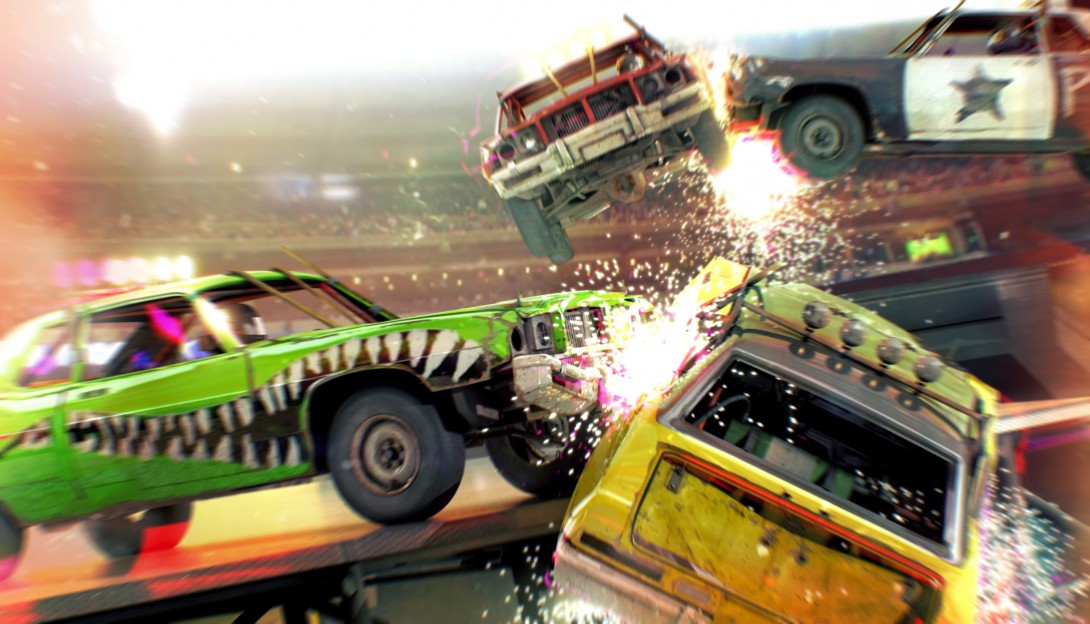
The core problem is that, bewilderingly, Showdown’s high-octane arena battles, known as Rampage events, are limited to just 8 cars in total, making the carnage feel somewhat subdued. Crashes lack spectacle too, as collisions are devoid of the shower of glass and debris you would expect from an intense impact, and it’s hard not to expect more from the limited damage modelling – discounting Hoonigan events, cars in DiRT Showdown are unlicensed generic models, so there’s really no excuse. The collision detection also seems to be wildly inconsistent – at times, a simple sideswipe awarded points attributed to a brutal head-on collision and vice versa.
Another flaw is that Rampage events don’t follow the established ‘last man standing’ template, instead opting for Call of Duty Deathmatch-style respawns whenever you write off your vehicle. Double points during the final 30 seconds of each round at least help to ramp up the tension and add some unpredictability to the proceedings, but without the fear of totaling your car or the satisfaction of terminally wrecking others, the action feels oddly disconnected.
It’s therefore hard to shake off the feeling that Demolition has already been done better in games from generations past, and this remains true for the remaining event types within this mode. BugBear’s FlatOut Ultimate Carnage already gave us proper 12 car arena battles, whereas Knock Out mode, whereby you are awarded points for knocking each other off a raised platform, brought back memories of Destruction Derby Raw’s epic skyscraper battles, but again the fact that everyone can respawn renders it pointless.
8-Ball events on the other hand stage races on figure of 8 tracks with central crossroads where collisions are almost a certainty. It can be frustrating when you’re in the lead only to have it snatched away from you from an unexpected intersection t-bone but that’s the nature of these races, yet it somehow felt more intense in Destruction Derby and Test Drive Eve of Destruction.

On Tour
While Showdown does a decent job of shaking up event types in its Showdown Tour career mode, repetition soon sets in thanks largely to the lack of locations – some of which are shamelessly recycled from DiRT 3. Only five locations are available, and while each offers a variety of terrain, from the snowy backdrops of Aspen to the desert routes of Nevada, the track design often leaves much to be desired. The flat, dull and unimaginative Miami street races are a particular lowlight.
As stellar as the presentation is, complete with tumbling menu blocks, it’s disappointing to find that there isn’t a single race option, meaning you have to trawl through the career to find the track, event and car combination you want. It’s an unfortunate oversight that only perpetuates the lack of replay value, as the career can be quickly completed with ease.
Fortunately, DiRT Showdown does at least excel graphically, but then it would since it’s running on the same EGO engine that powered DiRT 3. Nevertheless, it still manages to impress, as cars and tracks sport an intricate level of detail you come to expect from a Codemasters game. Environments look especially lavish thanks to well rendered lighting and particle effects that give every track a distinct sense of style.
In reality, Showdown was primarily designed to be played online, a point it makes abundantly clear when it incessantly nags you to connect every time you start its engine. It’s all a ploy to get you to sign up to Racenet, Codemasters’ new stat-tracking system currently in beta form that’s essentially their answer to Need for Speed’s successful Autolog system.
Racenet allows you to keep a track of your wins, losses, times etc although it’s interesting to read the overall stats – at the time of writing, over 15 million cars have apparently been wrecked in Showdown online. In all honesty, it’s worth signing up for if only for the initial in-game cash bonuses you are rewarded with.
Every event found in Showdown Tour can be played online, and it’s predictably more enjoyable to play against human opponents. The primal thrill of bashing into a human opponent is ever present, but the physics don’t always appear up to the task as I sometimes experienced some dodgy collision detection. Completing events also invite you to challenge a friend to beat your record, which at least offers more incentive to keep playing unlike in the offline portion.
Like the banger racers you’ll wreck in the game, DiRT Showdown is a heavily stripped down version of the real thing. At times it’s a fun and exciting spectacle to behold, but banger racers ultimately weren’t built to last very long.
Our Review
Summary
Showdown was primarily designed to be played online, a point it makes abundantly clear when it incessantly nags you to connect every time you start its engine. It’s all a ploy to get you to sign up to Racenet, Codemasters’ new stat-tracking system currently in beta form that’s essentially their answer to Need for Speed’s successful Autolog system. Every event found in Showdown Tour can be played online, and it’s predictably more enjoyable to play against human opponents. The primal thrill of bashing into a human opponent is ever present, but the physics don’t always appear up to the task as I sometimes experienced some dodgy collision detection. Completing events also invite you to challenge a friend to beat your record, which at least offers more incentive to keep playing unlike in the offline portion.


